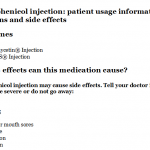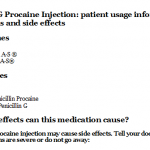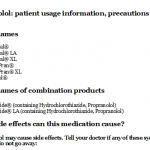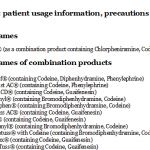
Typhoid Vi Polysaccharide Vaccine: patient information, prescribing information, ingredients, manufacturer, adverse reactions and side effects
Friday, April 07, 2017 by Gregory Van Dyke
http://www.naturalnewsreference.com/2017-04-07-typhoid-vi-polysaccharide-vaccine-patient-information-prescribing-information-ingredients-manufacturer-adverse-reactions-and-side-effects.html
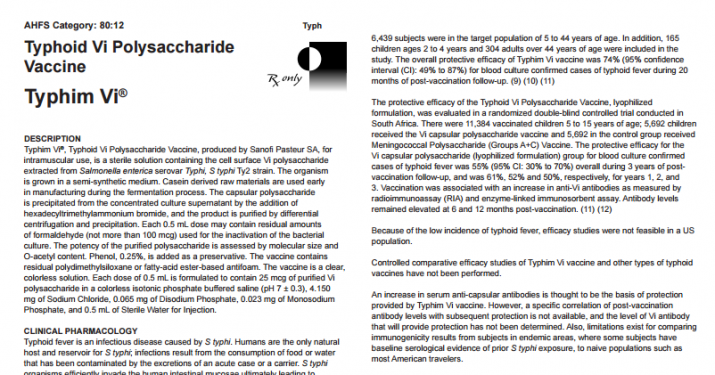
HIGHLIGHTS OF PRESCRIBING INFORMATION These highlights do not include all the information needed to use Typhim Vi safely and effectively. See full prescribing information for Typhim Vi.
See full insert sheet at this link at the Natural News Reference website.
Typhim Vi (Typhoid Vi Polysaccharide Vaccine)
Suspension for Intramuscular Injection
Initial U.S. Approval:
INGREDIENTS AND EXCIPIENTS
Typhim Vi®, Typhoid Vi Polysaccharide Vaccine, produced by Sanofi Pasteur SA, for intramuscular use, is a sterile solution containing the cell surface Vi polysaccharide extracted from Salmonella enterica serovar Typhi, S typhi Ty2 strain. The organism is grown in a semi-synthetic medium. Casein derived raw materials are used early in manufacturing during the fermentation process. The capsular polysaccharide is precipitated from the concentrated culture supernatant by the addition of hexadecyltrimethylammonium bromide, and the product is purified by differential centrifugation and precipitation.
Each 0.5 mL dose may contain residual amounts of formaldehyde (not more than 100 mcg) used for the inactivation of the bacterial culture. The potency of the purified polysaccharide is assessed by molecular size and O-acetyl content. Phenol, 0.25%, is added as a preservative. The vaccine contains residual polydimethylsiloxane or fatty-acid ester-based antifoam. The vaccine is a clear, colorless solution. Each dose of 0.5 mL is formulated to contain 25 mcg of purified Vi polysaccharide in a colorless isotonic phosphate buffered saline (pH 7 ± 0.3), 4.150 mg of Sodium Chloride, 0.065 mg of Disodium Phosphate, 0.023 mg of Monosodium Phosphate, and 0.5 mL of Sterile Water for Injection.
INDICATIONS AND USAGE
Typhim Vi vaccine is indicated for active immunization for the prevention of typhoid fever caused by S typhi and is approved for use in persons two years of age or older.
Immunization with Typhim Vi vaccine should occur at least two weeks prior to expected exposure to S typhi.
Typhim Vi vaccine is not indicated for routine immunization of individuals in the United States (US). (14)
DOSAGE AND ADMINISTRATION
Parenteral drug products should be inspected visually for particulate matter and discoloration prior to administration, whenever solution and container permit. The syringe or vial and its packaging should also be inspected prior to use for evidence of leakage, premature activation of the plunger, or a faulty tip seal. If any of these conditions exists, the vaccine should not be administered.
For intramuscular use only. Do NOT inject intravenously.
The immunizing dose for adults and children is a single injection of 0.5 mL. The dose for adults is typically given intramuscularly in the deltoid, and the dose for children is given IM either in the deltoid or the anterolateral thigh. The vaccine should not be injected into the gluteal area or areas where there may be a nerve trunk.
A reimmunizing dose is 0.5 mL. Reimmunization consisting of a single dose for US travelers every two years under conditions of repeated or continued exposure to the S typhi organism is recommended at this time. (14)
DOSAGE FORMS AND STRENGTHS
Syringe, without needle, 0.5 mL
CONTRAINDICATIONS
TYPHIM Vi VACCINE IS CONTRAINDICATED IN PATIENTS WITH A HISTORY OF HYPERSENSITIVITY TO ANY COMPONENT OF THIS VACCINE.
WARNINGS AND PRECAUTIONS
The safety and immunogenicity of Typhim Vi vaccine in children under two years of age has not been established. As with other polysaccharide vaccines, the antibody response may be inadequate. The decision whether to vaccinate children under 2 years of age depends upon the risk incurred by the child on the basis of the epidemiological context.
Typhim Vi vaccine provides protection against the risk of infection related to Salmonella typhi, but gives no protection against Salmonella paratyphi A or B, non-S typhi species of Salmonella enterica serovar Typhi, or other bacteria that cause enteric disease.
ADVERSE REACTIONS
Adverse event information is derived from clinical trials and worldwide post-marketing experience.
DRUG INTERACTIONS
There are no known interactions of Typhim Vi vaccine with drugs or foods.
USE IN SPECIFIC POPULATIONS
PREGNANCY CATEGORY C
Animal reproduction studies have not been conducted with Typhim Vi vaccine. It is not known whether Typhim Vi vaccine can cause fetal harm when administered to a pregnant woman or can affect reproduction capacity. Typhim Vi vaccine should be given to a pregnant woman only if clearly needed. (14)
When possible, delaying vaccination until the second or third trimester to minimize the possibility of teratogenicity is a reasonable precaution. (18)
NURSING MOTHERS
It is not known whether Typhim Vi vaccine is excreted in human milk. Because many drugs are excreted in human milk, caution should be exercised when Typhim Vi vaccine is administered to a nursing woman.
There is no data on the use of this product in nursing mothers.
PEDIATRIC USE
Safety and effectiveness of Typhim Vi vaccine have been established in children 2 years of age and older. (10) (11) (See DOSAGE AND ADMINISTRATION section.) FOR CHILDREN BELOW THE AGE OF 2 YEARS, SAFETY AND EFFECTIVENESS HAVE NOT BEEN ESTABLISHED.
Revised:
https://www.vaccineshoppe.com/image.cfmdoc_id=9372&image_type=product_pdf
http://naturalnewsreference.com/vaccine-insert-sheets/Typhoid-Vi-Polysaccharide-Vaccine.pdf
Tagged Under: Tags: dosage, ingredients, insert sheet, side effects, typhim vi, typhoid, usage, warnings

